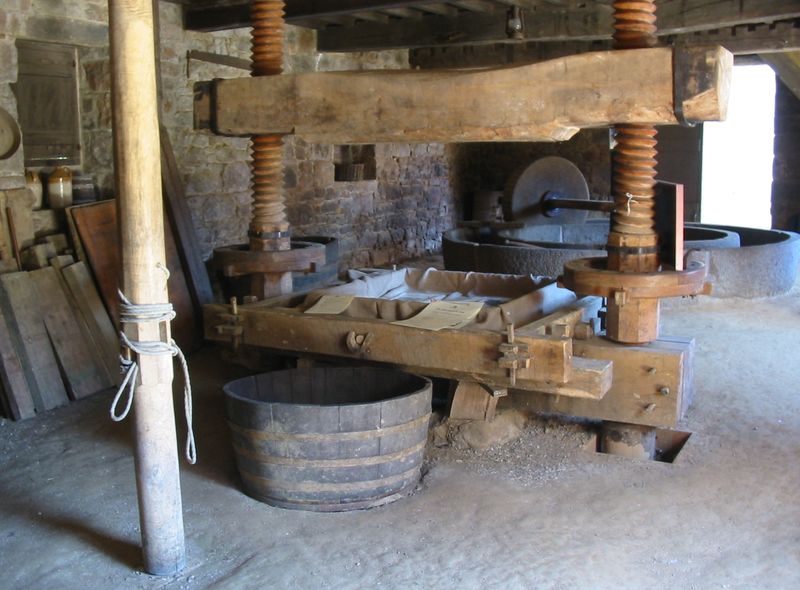Watermelon in Period
By
Honorable Lady Sosha Lyon’s O’Rourke
Watermelon in Period
By
Honorable Lady Sosha Lyon’s O’Rourke
Watermelon:
The modern watermelon is from the cucurbitaceous, a flowering plant from Africa, which is called a pepo by botanist. A pepo is a berry with a fleshy center and a thick rind. (http://en.wikipedia.org/wiki/Watermelon) The watermelon was not always sweet as a philosopher once noted
“Friends of the present day are like the melon. You must try 50 before you find a good one” (Translation) (Toussaint-Samat, pp. 657) Toussaint-Samat tells of the various type of cucurbitaceous found in America are the pumpkins, gourds, marrows and courgettes and squashes while the cucumber and watermelon are African in origin. (pp. 657). Wiki expands on the three types of melons (but no the cucumis of the Americas) found were bland, sweet and bitter. The original sizing of non cultivated watermelons were small, not much larger then quince. (Toussaint-Samat, pp. 657) Cultivation in the 5th century BC by the Egyptians grew larger and sweeter fruits which became widely popular in the Mediterranean area. By the 13th century invading Moors introduced the fruit to Europe. (Wikipedia)
Watermelon in period:
Shah ;Abbas II Receiving the Mughal Ambassador, Iran. C. 1663. Aga Khan Museum Collection.
The painting is very large and the watermelon small but prominent in placement. At the Shah’s left knee is a small oriental bowl is half a watermelon. The distinguishing characteristics is red flesh with black seeds and an alternating rind with dark and light green stripes seen above the rim of the white bowl.
I have found a few recipes for watermelon as a drink or roasting of the seeds, I actually like the idea of a fruit being enjoyed just as a fruit in this instance. So I present, watermelon in a bowl as presented in the hunting picture.
There is also a very tasty sherbet, that I would like to share.
Translation:
…put together one cup of water with two dirams of sugar and add it to any fruit juice. This becomes a quantity of sherbet. (The Nimatnama Manuscript. Pp. 27)
Ingredients:
One watermelon, inner flesh scooped out
½ to 1 C sugar
1 C water
Redaction:
This recipe is very simple and very tasty! Take one watermelon.
Next gut the red flesh from the green rind and place in a bowl.
Then squish…reputedly, till the watermelon flesh is juiced.
A simple potato smasher will work. Finally add sugar and stir.
Then pour juice over fresh snow and consume.
If there is no snow available, then use crushed ice (not pictured here). This is really good. Sweet watermelon juice at just the right temperature during the middle of summer.
Period vs. Modern
I had to use a modern type of watermelon for both the sliced watermelon and the watermelon juice. The watermelon in my garden is not fruiting so home grown wasn’t an option at this point. The sugar is simple table sugar.
Sugar – Saccharum officinarum “…considered a spice even rarer and more expensive then any other…pharmaceutical use…gives its species name of officinarum.” Considered very expensive till the late 1500. Loaf sugar given the name due to the conical shape derivded from refining into a hard and very white refined form. Caffetin or Couffin (English equivalent of “coffer” or “coffin”) named for the form, packed in plaited leaves palm and from the city shipped from called Caffa in the Crimea. Casson a very fragile sugar also considered the ancestor to castor sugar. Muscarrat considered the best of all sugars, reported to be made in Egypt for the Sultan of Babylon. The Italian name mucchera denotes that it had been refined twice. (Toussaint-Samat, pg. 553-555)
I used a potato smasher to liquefy the watermelon. I did not use a blender; however I do not know what was used in period for making fruit juice other then presses.

http://en.wikipedia.org/wiki/File:Cider_press_in_Jersey.jpg
This is a traditional cider press as a reference. I can’t imagine that every house had a press so my belief is that the fruit would have been cut into small chunks, then placed in a muslin bag and squeezed till all the juice that human muscle could produce.
Reference
Komaroff, L., (2001). Gifts of the Sultan. The Art of Giving at the Islamic Courts. Yale University Press.
Staub, J., (2005). 75 Exciting Vegetables for Your Garden. Library of Congress.
The Sultan’s Book of Delights, The Ni’mantnama Manuscript of the Sultans of Mandu. (2005). Translated by Norah M. Titley.
Toussaint-Samat, M., (1992). History of Food. Barnes & Nobles.
http://en.wikipedia.org/wiki/Watermelon
http://en.wikipedia.org/wiki/File:Cider_press_in_Jersey.jpg







No comments
Comments feed for this article
Trackback link: http://roxalanasredactions.com/watermelon-in-period/trackback/